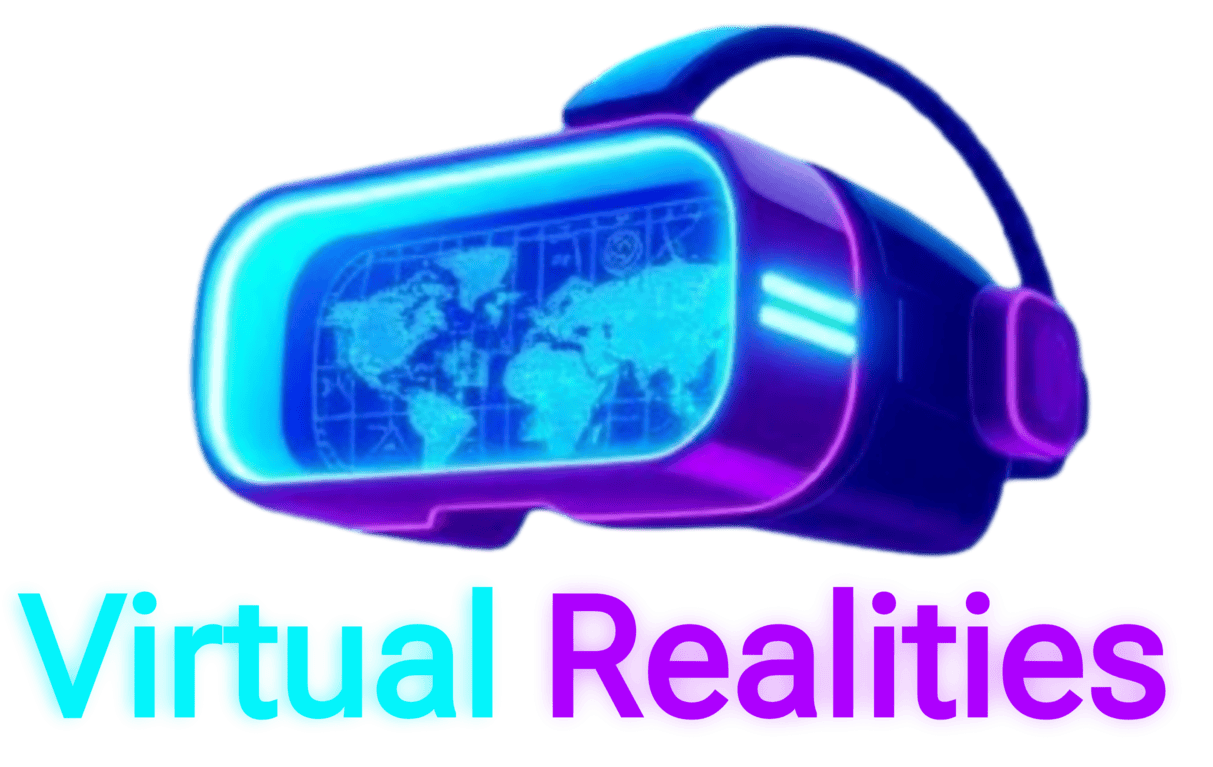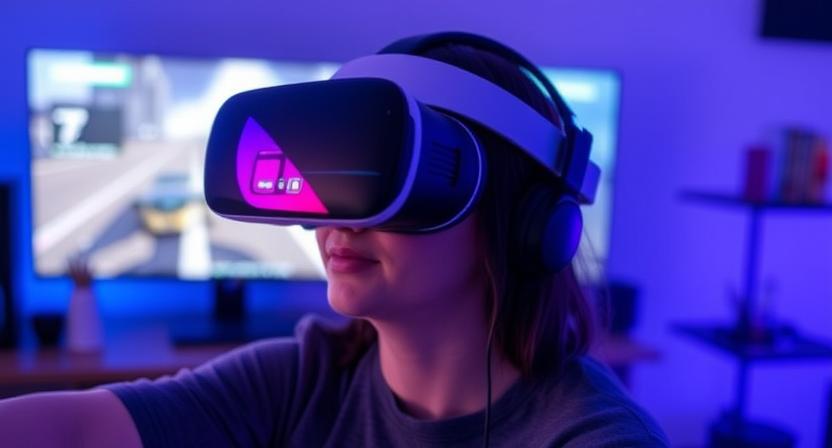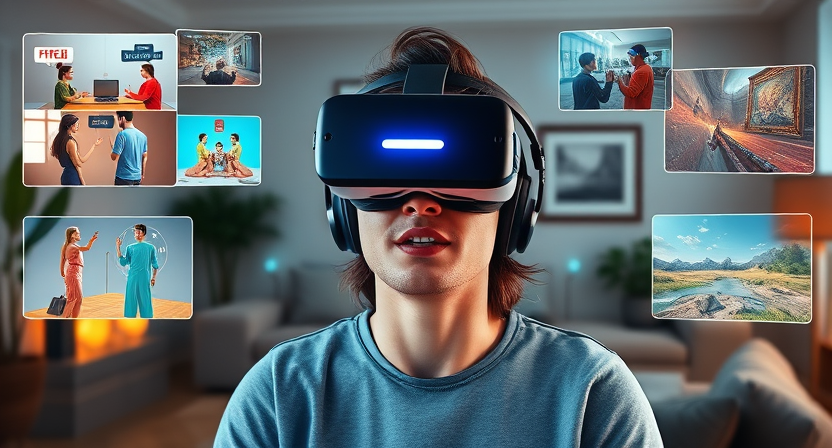Getting Started with VR Technology
Virtual reality technology has revolutionized the way we experience digital content by immersing users in virtual worlds. To begin your journey into the realm of VR, the first step is to choose the right VR headset that aligns with your needs and preferences. With a variety of options available in the market, it’s essential to consider factors such as display resolution, comfort, tracking capabilities, and compatibility with your existing devices.
Once you have acquired your VR headset, the next step is to set it up properly for an optimal experience. This involves following the manufacturer’s instructions for connecting the headset to your computer or gaming console, ensuring that all cables are securely attached, and adjusting the straps to fit comfortably on your head. Proper setup is crucial for reducing motion sickness and ensuring smooth performance as you delve into the immersive world of virtual reality.
Understanding the Basics of Virtual Reality
Virtual reality (VR) technology immerses users in a simulated environment, using headsets and sometimes accessories like gloves or motion-tracking sensors to interact with the digital world. By wearing a VR headset, users can feel as though they are physically present within a computer-generated environment, often with the ability to look around and interact with elements in the virtual space. This sense of presence is achieved through stereoscopic displays and motion tracking, allowing for a heightened sense of immersion and realism.
Basic VR systems consist of a VR headset, often connected to a computer or gaming console, that utilizes sensors to track the user’s head movements and adjust the display accordingly. This tracking creates a sense of depth and perspective as users move their heads, enhancing the feeling of being present in the virtual environment. Additionally, some VR systems incorporate hand controllers or other peripherals to enable users to interact with objects in the virtual world, adding a tactile dimension to the experience.
Choosing the Right VR Headset for Your Needs
When selecting a VR headset, it’s essential to consider factors like your budget, intended usage, and compatibility with your existing devices. For beginners or casual users, entry-level VR headsets like the Oculus Quest 2 or PlayStation VR offer a good balance of performance and affordability. These headsets provide an immersive experience without breaking the bank and are relatively easy to set up and use.
For those looking for a more premium VR experience with advanced features and higher fidelity, options like the HTC Vive Cosmos or Valve Index may be more suitable. These high-end headsets offer superior graphics, better tracking capabilities, and more immersive gameplay. However, they typically come with a higher price tag and may require a more powerful PC for optimal performance.
Setting Up Your VR Headset Properly
Once you have chosen the right VR headset for your needs, the next step is to set it up properly. Begin by carefully unpacking your VR headset and its components, ensuring that everything is in good condition. Take your time to familiarize yourself with the various parts of the headset, such as the display, lenses, straps, and connectors.
Next, follow the manufacturer’s instructions for connecting the headset to your PC or console. Make sure to plug in all the necessary cables securely and double-check that everything is properly connected. It’s essential to position the VR sensors or cameras in the recommended locations, as this will impact the tracking accuracy and overall experience.
Installing VR Software and Apps
After setting up your VR headset, the next step is to install the necessary software and apps to enjoy a diverse range of virtual experiences. To begin, search for the official app store or platform that is compatible with your VR headset. Most VR devices have their own dedicated app stores where you can browse, purchase, and download VR content.
Once you have accessed the app store, you can explore a variety of virtual reality games, videos, educational apps, and productivity tools. It’s essential to read reviews and ratings to ensure you are selecting high-quality content that suits your preferences. After choosing the desired apps, follow the simple on-screen instructions to download and install them onto your VR device. Get ready to immerse yourself in the exciting world of virtual reality with the wide array of software and apps available at your fingertips.
Calibrating Your VR System for Optimal Performance
To ensure optimal performance from your VR system, it is crucial to calibrate various settings and components. Start by adjusting the interpupillary distance (IPD) on your VR headset to match the distance between your eyes. This adjustment is essential for a comfortable viewing experience and to prevent eye strain during extended VR sessions.
Next, calibrate the tracking sensors of your VR system by ensuring they have a clear line of sight and are properly positioned for accurate movement detection. Proper sensor calibration is key to minimizing tracking errors and maintaining a seamless VR experience. Additionally, make sure to regularly update firmware and software for your VR headset and controllers to access the latest features and improvements for optimal performance.
Creating a Comfortable VR Gaming Environment
To ensure a comfortable VR gaming environment, consider your physical surroundings. Make sure the area where you’ll be using your VR headset is free from obstacles and hazards. Clear the space of any objects that could potentially be tripped over or knocked down during gameplay. Additionally, ensure that the room is well-lit to avoid eyestrain and disorientation while immersed in the virtual world.
Another key aspect of creating a comfortable VR gaming environment is adjusting the headset properly. Make sure the headset is secure on your head without being too tight or too loose. Experiment with the positioning of the headset to find the optimal fit that is both comfortable and provides a clear view of the virtual environment. Taking the time to properly adjust your VR headset can greatly enhance your overall gaming experience.
Exploring VR Fitness Options and Apps
Virtual Reality (VR) technology has revolutionized the way we approach fitness and exercise. With the rise of VR fitness options and apps, individuals can now engage in immersive workouts from the comfort of their own homes. These innovative fitness solutions blend the excitement of gaming with the benefits of physical activity, making exercise more enjoyable and motivating for users. From high-intensity interval training to dance-based workouts, there is a wide range of VR fitness options available to cater to different preferences and fitness goals.
Beyond traditional gym settings, VR fitness offers a dynamic and interactive way to stay active and healthy. Users can engage in virtual reality environments that transport them to exotic locations or challenge them with fun fitness routines. These VR fitness apps not only provide a great workout but also offer real-time feedback and progress tracking, allowing users to monitor their performance and set new fitness goals. Whether you prefer solo workouts or multiplayer challenges, VR fitness apps provide a fun and engaging way to break a sweat and improve your overall well-being.
Utilizing VR for Productivity and Learning
Incorporating virtual reality (VR) technology into educational and work settings is becoming increasingly popular due to its immersive and interactive capabilities. Students can engage in virtual field trips, simulations, and collaborative projects, enhancing their learning experiences. Similarly, professionals can benefit from VR by conducting virtual meetings, training sessions, and creating virtual workspaces to boost productivity and efficiency.
Moreover, VR offers a unique platform for skill development and training in various industries such as healthcare, engineering, and design. By simulating real-life scenarios and providing hands-on experiences, individuals can practice and refine their skills in a safe and controlled environment. This not only improves their competencies but also reduces training costs and minimizes risks associated with traditional training methods.
Connecting Your VR System to Other Devices
To enhance your virtual reality (VR) experience, you may want to connect your VR system to other devices. One common way to expand the capabilities of your VR setup is by linking it to your gaming console or PC. By connecting your VR headset to a gaming console, such as a PlayStation or Xbox, you can access a wider range of VR games and experiences that are compatible with these platforms. Additionally, connecting your VR system to a powerful PC can offer more processing power and graphical capabilities, allowing for smoother gameplay and sharper visuals in VR applications.
Another popular option for connecting your VR system to other devices is through the use of external sensors or cameras. These devices can help improve tracking accuracy and enable a more immersive VR experience by detecting your movements and translating them into the virtual environment. Some VR headsets come with built-in cameras or sensors, while others may require you to purchase additional accessories to connect to your system for enhanced functionality. By integrating external sensors or cameras into your VR setup, you can enjoy a more interactive and immersive virtual reality experience.
Exploring Multiplayer VR Gaming Options
Virtual reality has revolutionized the way we play games, offering immersive multiplayer experiences like never before. With the rise of multiplayer VR gaming options, players can connect with friends and strangers from around the world in virtual environments that feel incredibly real. Whether you’re teaming up to conquer challenges together or competing head-to-head in intense battles, multiplayer VR games provide a dynamic and social gaming experience that brings people together in exciting new ways.
From cooperative missions to competitive sports and everything in between, multiplayer VR gaming offers endless possibilities for interactive gameplay. By donning a VR headset and entering these virtual worlds, players can communicate with each other in real-time, strategize, and experience a level of immersion that traditional gaming can’t match. With the ability to see and interact with other players as if they were physically present, multiplayer VR gaming creates a sense of presence and camaraderie that enhances the overall gaming experience.
Setting Up VR Motion Controllers
To set up your VR motion controllers, make sure they are fully charged before use. Most controllers come with a charging cable that can be connected to a power source. Once they are charged, turn on your VR headset and follow the on-screen prompts to pair the controllers with your system. This usually involves holding down specific buttons on the controllers until they are successfully connected.
After pairing the controllers with your VR system, ensure they are properly calibrated for accurate movement tracking. This can usually be done through the settings menu on your VR headset or by following the instructions provided with the controllers. Make sure you have enough space to move around and that there are no obstructions that could interfere with the controllers’ tracking capabilities. By following these steps, you’ll be ready to fully immerse yourself in the virtual world with your VR motion controllers.
Adjusting Display Settings for a Clearer Picture
When it comes to adjusting display settings for a clearer picture in your VR experience, the resolution is a key factor to consider. Increasing the resolution can enhance the sharpness and clarity of the images you see through the headset. However, it’s important to remember that higher resolutions may require more processing power from your system, so finding the right balance is crucial to avoid lag or performance issues.
In addition to resolution, adjusting the field of view can also impact the clarity of the picture in VR. A wider field of view can make the experience more immersive, but it may also put more strain on your system’s graphics capabilities. Experimenting with different field of view settings can help you find the optimal balance between immersion and performance for a clearer and more enjoyable VR experience.
Exploring VR Content and Experiences
Virtual reality offers a plethora of content and experiences for users to immerse themselves in. From exploring virtual worlds to engaging in interactive storytelling, the possibilities are endless. With VR, users can dive into realistic simulations, travel to exotic locations, attend live events, or even visit historical settings. The diversity of content available ensures that there is something for everyone, whether you are a gaming enthusiast, an art lover, a history buff, or simply looking for new ways to experience entertainment.
One of the most exciting aspects of exploring VR content is the sense of presence it brings. The feeling of being physically present in a digital environment can be incredibly immersive and transformative. Whether you are soaring through the skies in a virtual airplane, solving puzzles in a mysterious dungeon, or collaborating with friends in a multiplayer game, VR content and experiences have the power to transport you to new realities and provide unforgettable moments of adventure and discovery.
Learning How to Navigate VR Environments
Navigating virtual reality environments can initially feel overwhelming for new users, but with practice and familiarity, it becomes more intuitive. As you enter a VR world, you’ll find yourself in a 3D space that you can explore and interact with using your headset and controllers. Moving around in VR typically involves using a combination of head movements to look around and controller inputs to walk, teleport, or interact with objects. It’s crucial to pay attention to your surroundings and be mindful of any virtual obstacles to avoid disorientation or motion sickness.
Furthermore, mastering navigation in VR environments often involves understanding the layout of the virtual space and utilizing any in-game maps or guidance tools provided. Some VR experiences may require you to solve puzzles, complete challenges, or navigate complex terrains, all of which contribute to the immersive nature of the technology. Take your time to explore different environments, experiment with different movement options, and gradually build up your comfort level with navigating virtual worlds.
Understanding VR Safety Precautions
When diving into the immersive world of virtual reality (VR), it’s crucial to prioritize safety precautions to ensure a seamless and enjoyable experience. One of the primary considerations is setting up your VR play area in a clear, obstacle-free space to prevent any accidents or collisions during gameplay. Additionally, it’s recommended to establish boundaries within your VR environment to avoid wandering into potentially hazardous areas.
Furthermore, taking regular breaks and staying hydrated while using VR technology is essential for preventing fatigue and discomfort. Prolonged use of VR headsets can sometimes lead to symptoms such as eye strain, dizziness, or motion sickness. Being mindful of these potential side effects and knowing when to take a break can help maintain your well-being and overall enjoyment of the VR experience.
Optimizing Your VR System for Better Performance
To maximize the performance of your VR system, consider upgrading your hardware components such as the graphics card, CPU, and RAM to meet the recommended specifications for a smoother experience. Installing the latest drivers for your VR headset and graphics card can also enhance compatibility and optimize performance. Additionally, closing any background applications or processes that are not essential while running VR applications can free up system resources and improve overall performance.
Another crucial aspect of optimizing your VR system for better performance is ensuring that your play area is well-lit and free of obstructions. Properly calibrating your VR system, including the room sensors and headset positioning, can help reduce tracking errors and improve the overall immersive experience. Regularly cleaning your VR headset lenses and sensors can also prevent interference and ensure clear visuals while exploring virtual environments.
Troubleshooting Common VR System Issues
When encountering common VR system issues, it is crucial to first check the physical connections of your headset and ensure everything is securely plugged in. Loose cables or faulty connections can often be the root cause of many problems users face while using VR technology. Additionally, if you are experiencing display issues such as blurry visuals or distorted images, adjusting the positioning of the headset on your head and ensuring it is properly calibrated can help improve the clarity of the display.
Another common problem VR users may encounter is motion sickness or discomfort while using the technology. To alleviate these symptoms, it is recommended to take regular breaks during VR sessions and gradually acclimate yourself to the virtual environment. Ensuring that your VR system meets the minimum hardware and software requirements for the applications you are using can also help prevent performance issues that may lead to motion sickness or discomfort.
Upgrading Your VR System for Enhanced Experiences
Upgrading your VR system can significantly enhance your overall virtual reality experience. One of the key elements to consider when looking to upgrade is your VR headset. Investing in a higher-resolution headset can bring sharper images and more immersive gameplay. Additionally, upgrading to a headset with a wider field of view can provide a more realistic feel to your virtual environments.
Another aspect to consider when upgrading your VR system is the graphics card of your computer. A powerful graphics card can ensure smoother frame rates and improved visual quality in VR games and experiences. Upgrading to a more advanced graphics card can also enable you to run more demanding VR applications without experiencing lag or performance issues.
Exploring Future Trends in VR Technology
As the realm of virtual reality continues to evolve at a rapid pace, future trends in VR technology are poised to revolutionize the way we interact with digital content. One prominent direction is the advancement of standalone VR headsets, eliminating the need for tethering to a separate device and providing users with more freedom of movement. These self-contained units are expected to become more powerful and feature-rich, enhancing the overall immersive experience for users.
Another exciting trend on the horizon is the integration of augmented reality (AR) within virtual reality environments, creating a seamless blend of the physical and digital worlds. By overlaying digital elements onto the real world, users can expect to engage in even more interactive and personalized experiences. This convergence of AR and VR technologies holds immense potential for various applications, from gaming and entertainment to education and professional training.




